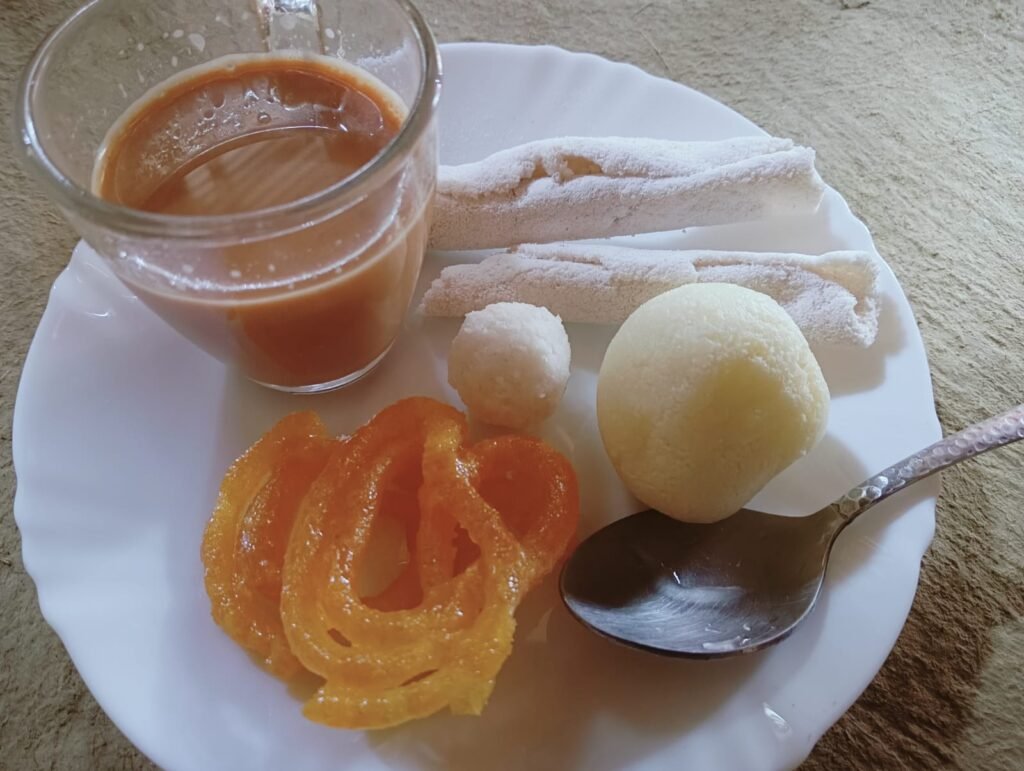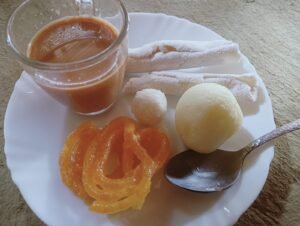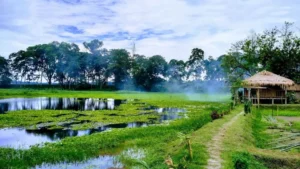A Deep Dive into Traditional Assamese Cuisine
Tucked away in the lush green landscapes of Northeast India, Assam is not only famous for its tea gardens, wildlife, and the mighty Brahmaputra River but also for its distinct and lesser-known cuisine. Assamese food is a beautiful blend of simplicity, subtle flavors, and natural ingredients that reflect the state’s agrarian lifestyle, indigenous culture, and biodiversity.
Unlike many Indian cuisines that rely heavily on spices and oil, Assamese cuisine is mild, refreshing, and rooted in the philosophy of eating fresh and local. It beautifully balances flavor and nutrition, often highlighting seasonal vegetables, herbs, fermented ingredients, and freshwater fish.
The Foundation: Ingredients and Cooking Methods
The backbone of Assamese food lies in its simplicity and regional produce. A typical Assamese meal revolves around rice, which is grown abundantly in the floodplains of the Brahmaputra. Varieties of rice such as Joha (aromatic rice), Bora (sticky rice), and Komal Saul (soft rice) are used in everyday meals and festive occasions.
Accompanying the rice are dals (lentils), green leafy vegetables, and fish or meat, often cooked with minimal spices. The use of mustard oil, fermented bamboo shoots, alkaline water, and banana leaves is central to Assamese cooking. Some dishes are boiled, some steamed, and others gently fried, but very rarely will you find food that is overwhelmingly oily or spicy.
Fermentation and preservation techniques, such as sun-drying and pickling, play an important role in Assamese kitchens. This is partly due to the humid climate, which encourages the preservation of vegetables and meats for year-round use.

The Signature Dishes of Assam
Let’s take a look at some iconic dishes that represent the diversity of Assamese cuisine:
1. Khar – The Soul of Assamese Cuisine
Khar is not just a dish—it’s an emotion in Assam. It is made using an indigenous technique where alkaline water is filtered through the ashes of sun-dried banana peels (especially from the bhim kol variety). The filtered water, also called khar, is used as the base to cook dishes with raw papaya, pulses, or even meat.
This unique alkaline flavor is something you won’t find anywhere else in India. Khar is often eaten at the beginning of a meal and is known for its digestive properties.
2. Masor Tenga – Tangy Fish Curry
Another staple dish is Masor Tenga, a light and sour fish curry usually made with tomatoes, lemon, or elephant apple (ou tenga). Cooked with minimal oil and spices, this dish is not just a summer favorite—it’s a must-have for any special occasion. It’s cooling, refreshing, and goes perfectly with steamed rice.
3. Aloo Pitika – The Assamese Comfort Food
Aloo Pitika is a mashed potato dish made with mustard oil, green chilies, chopped onions, and sometimes boiled eggs. It’s the Assamese version of mashed potatoes but with a pungent and flavorful twist. It’s incredibly simple yet deeply satisfying.
4. Duck Curry (Haanh) – Rich and Festive
Duck meat is considered a delicacy in Assam and is often reserved for special occasions. Haanh is typically cooked with ash gourd (kumura) or sesame seeds (til), giving it a rich texture and earthy flavor. The balance of meat with vegetables is a unique Assamese culinary trait.
5. Pork with Bamboo Shoot – Tribal Influence
This dish is popular among the tribal communities of Assam, especially the Bodo and Mishing people. The tender pork is cooked with fermented bamboo shoot, chilies, and herbs, resulting in a smoky, tangy dish that’s full of umami flavor.
6. Pitha and Larus – Sweet Traditions
Assamese festivals are incomplete without Pitha—a traditional rice cake prepared during Bihu, the harvest festival. Made using sticky rice, coconut, jaggery, and sometimes sesame seeds, pithas come in various forms like steamed (Tekeli Pitha), fried (Tel Pitha), or rolled (Sunga Pitha cooked in bamboo).
Larus (laddoos made with rice flour, coconut, or sesame) are also common sweet treats.
Seasonal Eating and Festivals
Assamese cuisine is deeply influenced by the seasons. In the winter, locals enjoy green leafy vegetables, black sesame, and dishes made with mustard greens. During summer, sour foods like tenga, elephant apple chutney, and cucumber salads are preferred for their cooling effects.
Bihu, the biggest festival in Assam, has three versions—Rongali, Kongali, and Bhogali Bihu—each with its own food traditions. During Bhogali Bihu, feasting is central. Families gather to prepare and enjoy elaborate meals, roast meats in traditional meji bonfires, and exchange homemade snacks.
Influence of Ethnic Communities
Assam is home to many indigenous communities like the Bodo, Mishing, Karbi, Rabha, and Tea Tribes, each bringing their unique culinary contributions. The use of bamboo shoot, black sesame, fish wrapped in leaves, and rice beer (Apong) are just a few examples of tribal food culture.
In fact, what makes Assamese cuisine so rich is its blend of tribal simplicity, Ahom-era culinary practices, and Vaishnavite vegetarian traditions from the Satras of Majuli.
Health and Sustainability
One of the most admirable aspects of Assamese cuisine is its focus on health and sustainability. The dishes use locally sourced, seasonal ingredients and natural preservatives. Meals are balanced—often including a carbohydrate (rice), protein (fish, pulses, meat), greens, and fermented side dishes, making them naturally nutritious.
Many traditional techniques, like the use of alkaline water in Khar or the fermenting of bamboo shoots, not only add flavor but also boost gut health.
Assamese Food Beyond Assam
While Assamese cuisine remains largely underrepresented on the national culinary map, things are slowly changing. Food enthusiasts and chefs are bringing regional recipes to the spotlight through social media, pop-up kitchens, and Assamese food festivals in urban centers.
Still, much of Assam’s culinary charm lies in its home-cooked meals, community feasts, and handed-down recipes, which are best experienced in the kitchens of local households or during rural homestays.
Final Thoughts
Assamese cuisine is a hidden treasure—simple yet profound, rooted in nature, and rich in heritage. It’s a culinary experience that goes beyond just taste—it tells the story of a people, their land, and their traditions. In a world where food trends are becoming increasingly global and fusion-focused, Assamese food stands as a refreshing reminder that authenticity, simplicity, and seasonality never go out of style.
Whether it’s the comforting warmth of Aloo Pitika, the refreshing tang of Masor Tenga, or the festive delight of Pitha, Assamese food invites you to slow down, savor, and connect with nature through every bite.





More Stories
Hidden Gem of the Northeast
Golden Threads of Tradition
বিজয়লক্ষ্মী বৰাৰ অনন্য কাহিনী